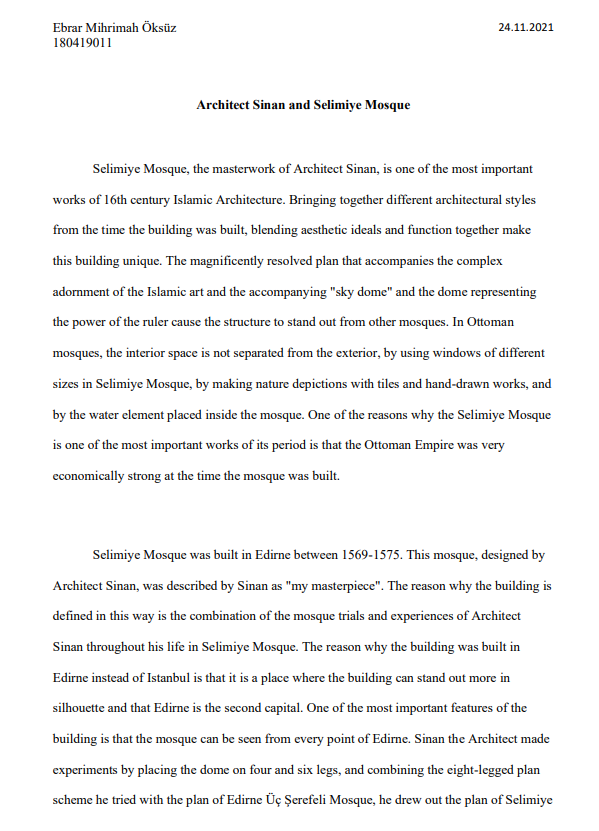
The foundation stone of the magnificent Selimiye Mosque was laid in 1568, and approximately 15 thousand artists and artisans laboured until it was completed in 1575. While its magnificence is apparent from its exterior, the actual amazement is felt in the main hall of the mosque.
The domed main hall of Selimiye Mosque represents the summit of his architectural career. Despite the large diameter of the dome, the pillars bearing its load were not allowed to divide the central space. According to historical records, six thousand people were able to take part in Salat ritual in the main hall of the mosque during an encampment of Ottoman army marching on its way to European campaigns. The four minarets of the mosque were placed on the corners of the main hall, and each minaret bears three sherefes (adhan platforms). Those minarets are also very slender despite being quite tall and this in itself is an architectural wonder, and their design is considered to be one of the most elegant within the whole Islamic architecture. In two of those minarets, there are three internal staircases leading to different sherefes that do not intersect at any point. Sinan, the Architect, designated the mosque as “the masterpiece” of his architectural career, although he built several other world renowned magnificent structures. The compendium of his works, entitled Tezkiret-ül Bünyan (Book of Structures), noted that with the dome of the Selimiye Mosque he has surpassed the famous dome of Hagia Sophia basilica in Istanbul, and that its minarets were unmatched. Sinan, the Architect, was famous for his modesty as well as his genius and mastery, so referring Selimiye Mosque in such terms in a contemporary book that claimed reiterating his words, and calling the mosque as “his masterpiece” were proofs of his belief that he has employed all knowledge and skills he has amassed through his long career.
The Selimiye Mosque is worth a visit since besides its architecture, its Iznik glazed wall tiles; its painted decorations of geometrical and floral patterns and calligraphy by master artists; the carved and mother-of-pearl inlaid wood fixtures, the carved marble mihrab and minbar are masterpieces in their own rights. One of the structures that made up the social complex of the mosque, the Dar al-Qurra Madrasa, has been converted to serve as the Foundation Museum, and another structure, the Dar al- Hadith Madrasa, now houses the Museum of Turkish and Islamic Art.
Disclaimer : Mopsqpedia is a non-profit database. All images featured in the database are sourced from various references, publications, and websites related to mosque architecture. Mosqpedia does not claim ownership of any images unless explicitly stated. Images are provided solely for educational and bibliographic purposes. Mosqpedia disclaims any responsibility for copyright infringements related to the images displayed. Users are responsible for verifying copyright status and obtaining permission from original sources if they intend to reproduce, distribute, or use any image beyond fair use.
I agree to the terms outlined below:
You agree to upload and assign Mosqpedia Database the rights to use the content worldwide and in perpetuity across all current and future media platforms. Mosqpedia Database may edit, copy, adapt and translate your contribution.
The content will be distributed under the Creative Commons Attribution-Deed – Attribution-NonCommercial-NoDerivatives 4.0 International – Creative Commons
All data will be stored in line with data protection regulations.
I agree to the terms outlined below:
You agree to upload and assign Mosqpedia Database the rights to use the content worldwide and in perpetuity across all current and future media platforms. Mosqpedia Database may edit, copy, adapt and translate your contribution.
The content will be distributed under the Creative Commons Attribution-Deed – Attribution-NonCommercial-NoDerivatives 4.0 International – Creative Commons
All data will be stored in line with data protection regulations.